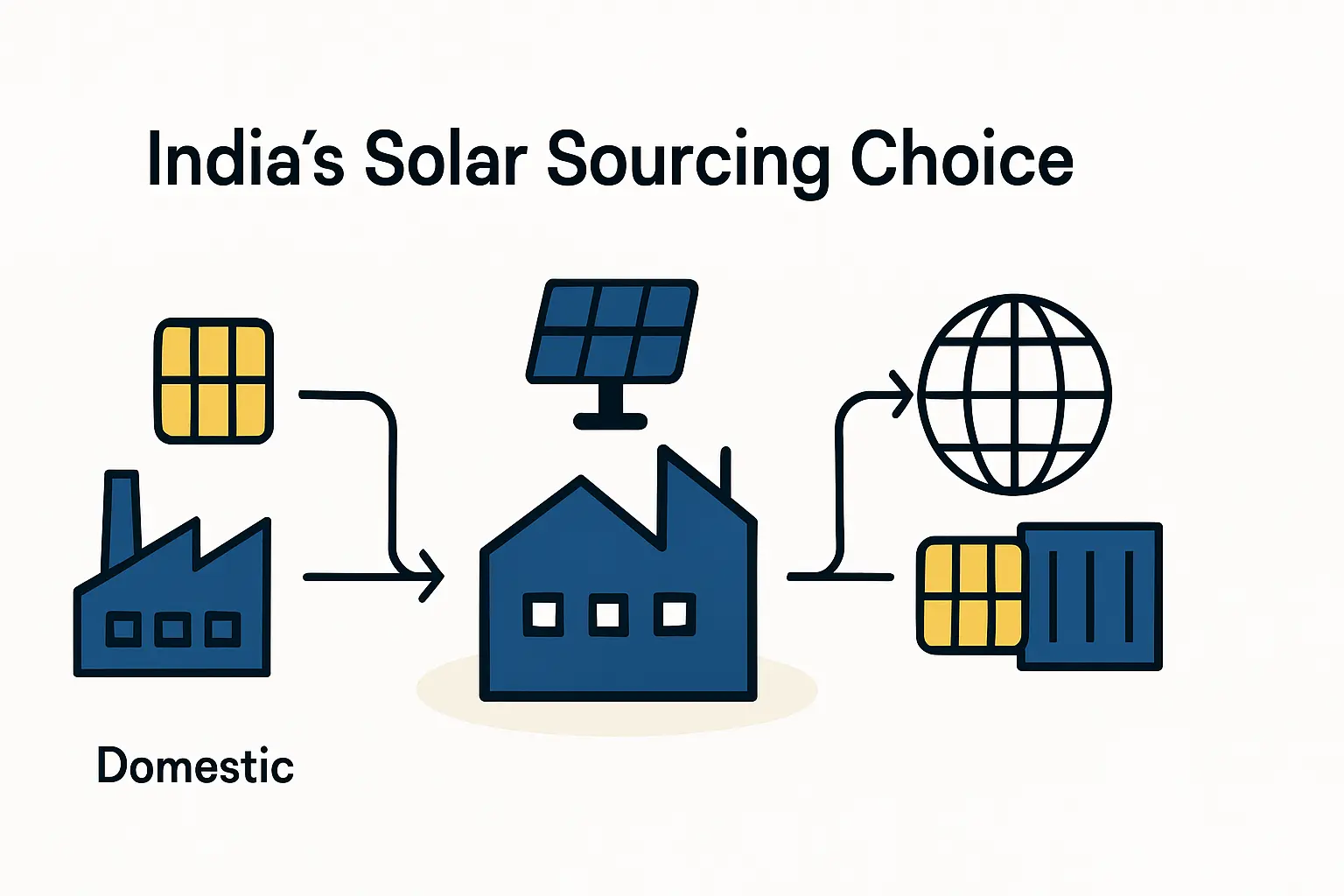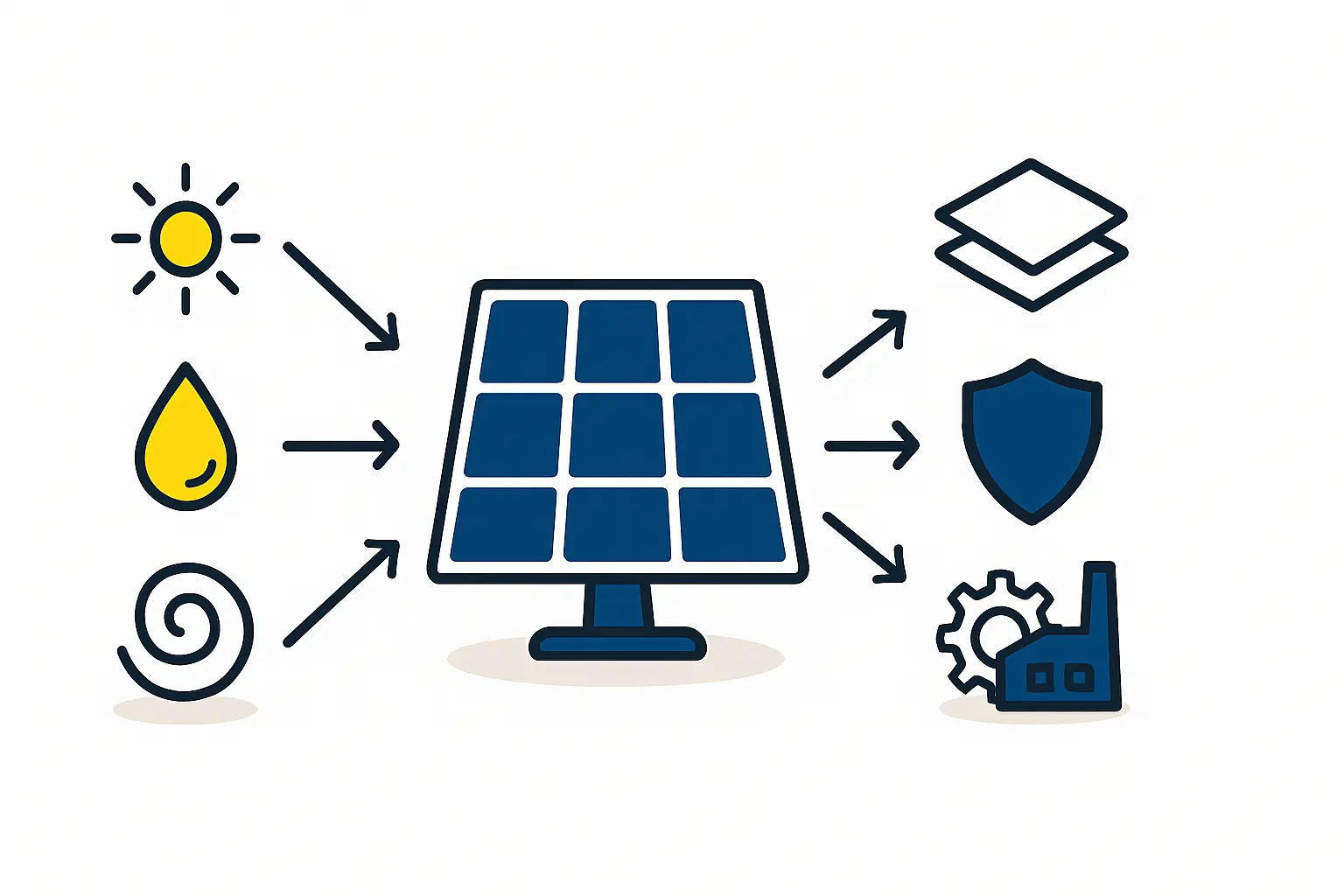India has made significant progress in solar power, adding a remarkable 18 GW of new capacity in the first half of 2025. This surge, detailed in a report by Mercom India, was particularly strong in the second quarter, which saw 11.3 GW installed—a 66.9% increase over the first quarter. This rapid expansion brought the country’s total cumulative solar capacity to 116.4 GW by the end of June, solidifying the strength of India’s solar market.
This record generation from solar and wind in early 2025 has had a tangible environmental impact, contributing to a 24 million tonne reduction in power sector emissions compared to the same period last year.
Solar Parks Lead Capacity Additions in India solar capacity 2025
A substantial portion of the new capacity, 8.6 GW, came from large-scale solar parks. The completion of several delayed utility-scale projects, driven by policy-linked commissioning deadlines, was a key factor in this growth. Maharashtra led the state-wise additions with 1.6 GW, followed by Andhra Pradesh with 1.4 GW, and Karnataka with 1 GW.
This brought India’s total cumulative solar capacity in parks to 58.6 GW by June 2025. On a cumulative basis, Maharashtra topped the list with 9.6 GW, followed by Rajasthan with 8.8 GW, and Tamil Nadu with 8.1 GW. The continued development of such projects, like the recent tender for a consortium for a 5 MW solar project, signals sustained momentum in this segment.
Ready to make big Profits?
The solar Industry is Booming
WE HELP NEWCOMERS to the solar industry start their own solar module production line. Customers can make BIG PROFITS by selling modules and finding investors, without wasting money and time on things they don't need!
Rooftop Solar Installations Surge in India solar capacity 2025
Rooftop solar installations also saw a significant increase, with 6 GW installed in the first half of 2025, marking a 23% growth compared to the previous period. Gujarat was the frontrunner in new rooftop installations with 1.2 GW, followed by Maharashtra with 1 GW, and Tamil Nadu with 739 MW. This impressive growth pushed the cumulative rooftop solar capacity in India to 26.5 GW by the end of June.
Commercial and Industrial Segments Drive India solar capacity 2025 Growth
The primary engine for the rooftop solar segment’s growth was the commercial and industrial (C&I) sectors, which together accounted for a commanding 70% of total installations. This highlights the increasing adoption of solar energy by businesses seeking to reduce operational costs and meet sustainability goals.
Residential installations contributed a healthy 20%, while government and institutional installations made up the remaining 10%. This diverse distribution demonstrates the widespread and deepening adoption of rooftop solar across different sectors of the economy.
Off-Grid Solar Installations in India solar capacity 2025
Demonstrating solar power’s versatility, off-grid solar installations contributed 3.4 GW in the first half of 2025. This brought the cumulative off-grid capacity to 8.9 GW by June, playing a vital role in providing energy access to remote areas. Uttar Pradesh topped the list with 1.6 GW, followed by West Bengal with 1.4 GW, and Karnataka with 1.2 GW.
Government Initiatives Boost India solar capacity 2025 Adoption
The Indian government has been a crucial catalyst in this rapid growth through proactive initiatives and policies. Schemes such as the Pradhan Mantri Kisan Urja Suraksha evam Utthaan Mahabhiyan (PM-KUSUM) have provided significant support for solar projects in rural areas, while the PM Surya Ghar Muft Bijli Yojana has been instrumental in accelerating rooftop adoption.
Furthermore, the government has introduced powerful incentives for domestic manufacturing. This strategic push aims to reduce reliance on imports and build a self-sufficient ecosystem. This support covers the entire solar panel manufacturing process, from sourcing raw materials to deploying advanced manufacturing machines. As a result, companies are making significant investments, such as the plan to build a 1.6 GW solar cell plant in Mathura.
Challenges and Future Prospects for India solar capacity 2025
Despite these achievements, the solar industry in India faces persistent challenges, including land acquisition, grid integration, and financial constraints. Recent trends also point to a slowdown in new auction awards and potential financial risks for developers. Addressing issues around solar power financing in India remains critical for sustained expansion.
However, the current growth trajectory suggests that the country is well-positioned to overcome these hurdles. The International Energy Agency (IEA) projects that India is set to become the world’s second-largest market for renewable energy growth. With strong projected solar capacity growth in the coming years, the government’s target of achieving 280 GW of solar capacity by 2030 appears increasingly attainable. This shift towards renewable energy is not only helping India meet its climate goals but is also creating jobs and boosting the economy.
To learn more about the intricacies of setting up a solar manufacturing business, you can enroll in our free e-course.



